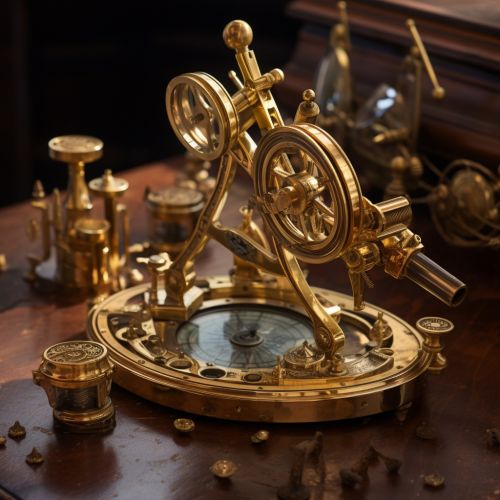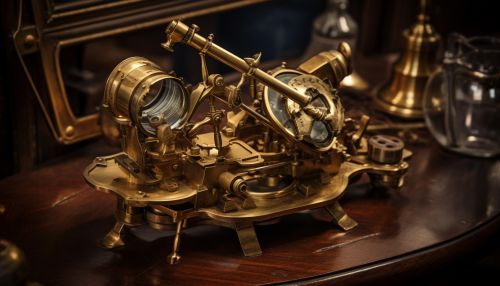Sextant
Introduction
A sextant is a navigational instrument used to measure the angle between any two visible objects. Its primary use is to determine the angle between a celestial object and the horizon which is known as the object's altitude. Making this measurement is known as sighting the object, shooting the object, or taking a sight. The angle, and the time when it was measured, can be used to calculate a position line on a nautical or aeronautical chart.
History
The sextant was invented independently in both England and America in 1731. The Englishman, John Hadley, and the American, Thomas Godfrey, both developed the sextant to improve upon the octant. The octant had limitations in measuring large angles, which the sextant overcame.
Design and Construction
A sextant works by using mirrors to align the image of a celestial body with the horizon. The angle is then read off a scale. The scale is graduated from -5 degrees to 125 degrees. The sextant has a movable arm, called the index arm, which is moved across the scale until the celestial body is brought down to the horizon. The angle read off the scale is then twice the angle between the celestial body and the horizon.


In navigation, a sextant is used to measure the angle between a celestial body and the horizon. This angle, together with the exact time of the measurement, is used to calculate the observer's position line on a chart. The position line is a line on which the observer is known to be located. Two or more such lines, obtained from measurements of different celestial bodies, intersect to give the observer's position.
Accuracy
The accuracy of a sextant is subject to several types of errors. These include index error, side error, and perpendicularity error. Index error is caused by the zero of the scale not coinciding with the zero of the index arm when the mirrors are aligned. Side error is caused by the index mirror not being parallel to the horizon mirror. Perpendicularity error is caused by the plane of the index mirror not being perpendicular to the plane of the sextant.
Modern Uses
While the sextant is no longer widely used in navigation, it remains a valuable tool in certain areas. For example, it is still used in celestial navigation when electronic systems fail. It is also used in surveying to measure angles between landmarks, and in astronomy to measure the positions of celestial bodies.
